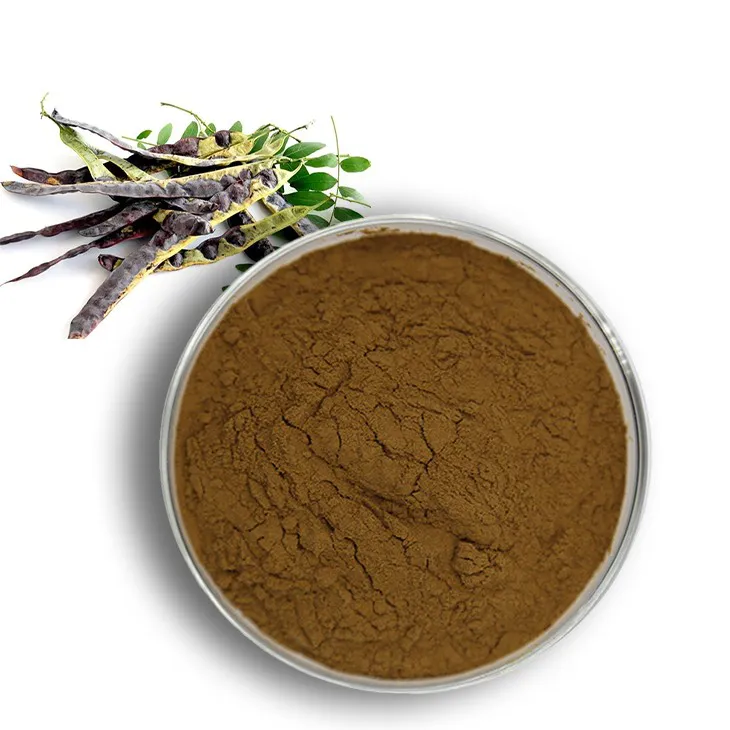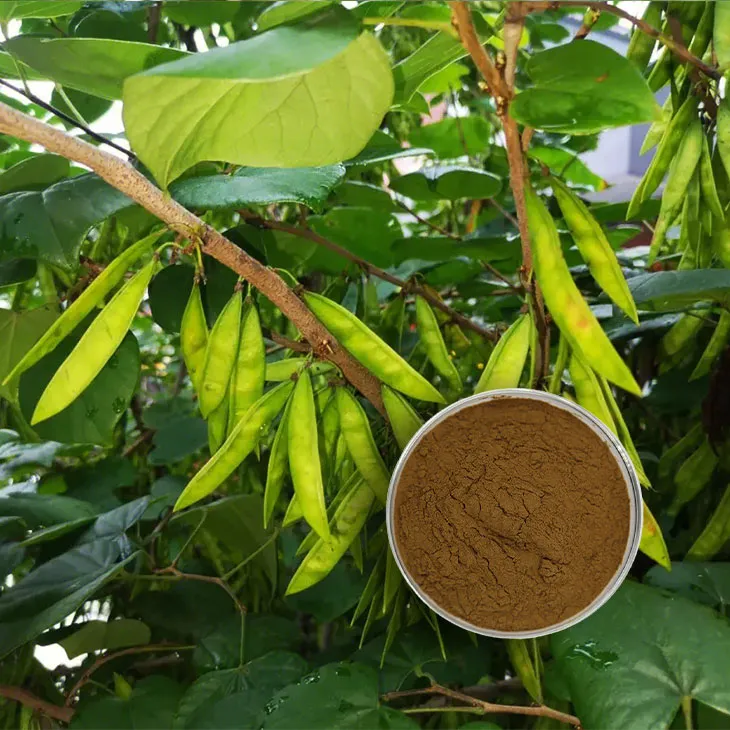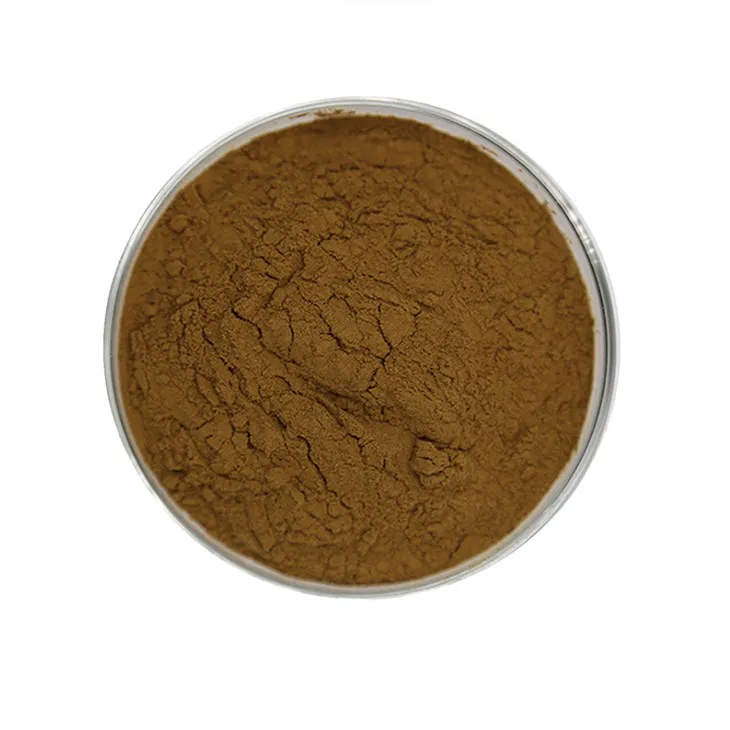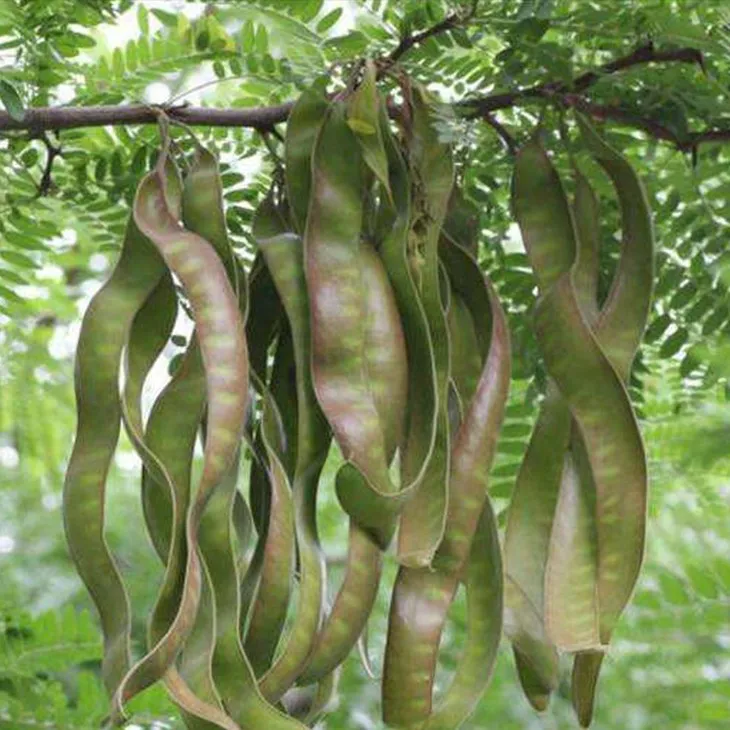- 0086-571-85302990
- sales@greenskybio.com
Saponin Extraction and Isolation: A Scientific Journey
2024-07-23

1. Introduction
Saponins are a diverse group of natural compounds that have gained significant attention in modern science due to their various biological activities. They are widely distributed in the plant kingdom, and their extraction and isolation are crucial steps for further research and potential applications. Saponins play important roles in plants, such as defense against pathogens and herbivores. In the scientific and pharmaceutical fields, they are being explored for their potential as drugs, antioxidants, and adjuvants in vaccines.

2. Sources of Saponins
Saponins are predominantly found in plants. A wide range of plant families are known to contain saponins. For example, the Fabaceae (legume) family, which includes plants like soybeans, contains saponins. The Asteraceae (daisy) family also has members rich in saponins. Additionally, plants from the Araliaceae family, such as ginseng, are well - known sources of saponins. These plants have been used in traditional medicine for centuries, and the saponins they contain are thought to be responsible for some of their medicinal properties.

3. Extraction of Saponins
3.1 Principles of Extraction
The extraction of saponins from plant materials is based on the principle of solubility. Saponins are typically polar compounds, so they are soluble in polar solvents. The goal of extraction is to break down the plant cell walls and release the saponins into the solvent. This can be achieved through various physical and chemical methods. Physical methods may include grinding the plant material to increase the surface area available for solvent interaction. Chemical methods may involve the use of acids or alkalis to break down cell walls more effectively.
3.2 Common Extraction Solvents
Ethanol is one of the most commonly used solvents for Saponin Extraction. It has several advantages. It is relatively safe to handle, has a good solubility for saponins, and is also miscible with water. This makes it suitable for extracting saponins from a wide range of plant materials. Another solvent is methanol, which has similar properties to ethanol but may be more effective in some cases due to its slightly different polarity. However, methanol is more toxic than ethanol and requires more careful handling.
Water can also be used as an extraction solvent for saponins. It is a very polar solvent and is particularly suitable for extracting water - soluble saponins. However, water extraction may also extract other water - soluble compounds along with the saponins, which may require further purification steps.
Butanol is another solvent that has been used for Saponin Extraction. It has a relatively high partition coefficient for saponins, which means it can effectively separate saponins from other plant components. Butanol is less polar than ethanol and methanol, which can be an advantage in some extraction processes.
3.3 Extraction Methods
One of the most basic extraction methods is maceration. In this method, the plant material is soaked in the extraction solvent for a period of time, usually several days to weeks. The solvent is then separated from the plant material, and the saponins are present in the solvent. This method is simple but may not be very efficient as it can take a long time.
Percolation is another extraction method. In percolation, the extraction solvent is slowly passed through the plant material. This can be more efficient than maceration as it continuously brings fresh solvent into contact with the plant material. However, it requires more equipment and careful control of the flow rate of the solvent.
Soxhlet extraction is a more advanced extraction method. In this method, the plant material is placed in a Soxhlet extractor, and the solvent is continuously recycled through the plant material. This method is very efficient as it allows for multiple extractions with a relatively small amount of solvent. However, it also requires specialized equipment and may be more time - consuming to set up.

4. Isolation of Saponins
4.1 Principles of Isolation
After extraction, the saponins need to be isolated from other components in the extract. Isolation is based on the differences in physical and chemical properties between saponins and other compounds. These properties include solubility, molecular weight, and charge. The goal is to obtain a pure or highly concentrated saponin fraction for further analysis and application.
4.2 Pre - isolation Purification
Before the actual isolation step, some pre - isolation purification steps may be necessary. One common method is filtration. Filtration can remove large particles, such as plant debris, from the extract. This helps to improve the purity of the extract and prevent clogging of subsequent purification equipment.
Centrifugation is another pre - isolation purification method. It can separate heavier components, such as insoluble solids, from the extract by applying centrifugal force. This can also help to clarify the extract and make it more suitable for further isolation steps.
4.3 Isolation Techniques
Column chromatography is a widely used isolation technique for saponins. In column chromatography, the extract is passed through a column filled with a stationary phase, such as silica gel or alumina. Different compounds in the extract will interact differently with the stationary phase, and they will be eluted at different times. Saponins can be selectively eluted based on their properties, allowing for their isolation from other components.
High - performance liquid chromatography (HPLC) is a more advanced and precise isolation technique. HPLC uses a high - pressure pump to force the extract through a column filled with a very fine stationary phase. This allows for a very high resolution separation of saponins from other compounds. HPLC can also be coupled with detectors, such as UV - Vis detectors, to monitor the elution of saponins and accurately collect the desired fractions.
Preparative thin - layer chromatography (PTLC) is another isolation method. In PTLC, the extract is spotted on a thin - layer plate coated with a stationary phase. The plate is then developed in a solvent, and the saponins will move up the plate at a different rate compared to other compounds. The saponin - containing bands can be scraped off the plate and the saponins can be recovered.

5. Potential Applications of Saponins
Saponins have a wide range of potential applications in modern science. In the pharmaceutical industry, they are being investigated as potential drugs. Some saponins have shown anti - cancer properties, for example. They may be able to induce apoptosis in cancer cells or inhibit tumor growth. Saponins may also have anti - inflammatory effects, which could be useful in the treatment of inflammatory diseases such as arthritis.
In the field of cosmetics, saponins are used in some skin - care products. They can act as natural surfactants, helping to clean the skin and remove dirt and oils. Additionally, their antioxidant properties may help to protect the skin from oxidative damage caused by free radicals.
In agriculture, saponins may have potential as natural pesticides. They can disrupt the cell membranes of insects and other pests, thereby killing or repelling them. This could provide an alternative to synthetic pesticides, which may have negative environmental impacts.
6. Conclusion
The extraction and isolation of saponins from natural sources are complex but important processes. Scientists have developed a variety of methods for extracting saponins using different solvents and extraction techniques. Isolation techniques are also crucial for obtaining pure saponin fractions for further research and applications. The potential of saponins in various fields, such as pharmaceuticals, cosmetics, and agriculture, makes them an exciting area of research. Continued research into Saponin Extraction, isolation, and applications will likely lead to new discoveries and the development of novel products in the future.
FAQ:
What are the common natural sources for saponin extraction?
Plants are the most common natural sources for saponin extraction. Many plant families, such as the Fabaceae (legume family), Araliaceae, and Dioscoreaceae, are known to contain saponins. For example, ginseng, which belongs to the Araliaceae family, is rich in saponins. Quinoa, a plant in the Amaranthaceae family, also contains saponins. These saponins can be found in different parts of the plants, including the roots, leaves, and fruits.
Which solvents are commonly used for saponin extraction?
Methanol and ethanol are two of the most commonly used solvents for saponin extraction. They are effective in dissolving saponins due to their polar nature. Water can also be used, especially in combination with other solvents. For example, a mixture of water and ethanol can be a good extraction solvent. In some cases, ethyl acetate can also be used, although it may be more suitable for the extraction of certain types of saponins. Hexane, which is a non - polar solvent, is generally not very effective for saponin extraction as saponins are polar compounds.
What is the importance of saponin isolation?
Saponin isolation is crucial for several reasons. Firstly, it allows for the purification of saponins, which is necessary for accurate chemical and biological characterization. Pure saponin samples are required for determining their chemical structures accurately. Secondly, isolation is important for further research on their biological activities. For example, if we want to study the anti - cancer properties of a particular saponin, we need to isolate it from other compounds in the plant extract. Thirdly, isolation is essential for the development of saponin - based products, such as drugs or natural health products, as it ensures the consistency and quality of the active ingredient.
What are the challenges in saponin extraction and isolation?
One of the main challenges in saponin extraction is the presence of other interfering compounds in the plant material. These compounds can co - extract with saponins and make the purification process more difficult. Another challenge is the selection of the appropriate extraction solvent. Different saponins may have different solubility properties, and finding the optimal solvent or solvent combination can be time - consuming. In isolation, the separation of saponins from structurally similar compounds can be a problem. Also, saponins can be sensitive to certain conditions such as high temperature or pH changes during the extraction and isolation processes, which may lead to degradation.
How can the effectiveness of saponin extraction be improved?
The effectiveness of saponin extraction can be improved in several ways. Firstly, optimizing the extraction parameters such as solvent concentration, extraction time, and temperature can enhance the extraction yield. For example, increasing the ethanol concentration within a certain range may increase the solubility of saponins. Secondly, pre - treatment of the plant material can be helpful. Grinding the plant material into a fine powder can increase the surface area available for extraction. Thirdly, using modern extraction techniques such as ultrasonic - assisted extraction or microwave - assisted extraction can improve the extraction efficiency compared to traditional methods.
Related literature
- Saponin Chemistry and Biological Activities"
- "Isolation and Characterization of Saponins from Medicinal Plants"
- "Advanced Extraction Techniques for Saponins"
- ▶ Hesperidin
- ▶ Citrus Bioflavonoids
- ▶ Plant Extract
- ▶ lycopene
- ▶ Diosmin
- ▶ Grape seed extract
- ▶ Sea buckthorn Juice Powder
- ▶ Fruit Juice Powder
- ▶ Hops Extract
- ▶ Artichoke Extract
- ▶ Mushroom extract
- ▶ Astaxanthin
- ▶ Green Tea Extract
- ▶ Curcumin
- ▶ Horse Chestnut Extract
- ▶ Other Product
- ▶ Boswellia Serrata Extract
- ▶ Resveratrol
- ▶ Marigold Extract
- ▶ Grape Leaf Extract
- ▶ New Product
- ▶ Aminolevulinic acid
- ▶ Cranberry Extract
- ▶ Red Yeast Rice
- ▶ Red Wine Extract
-
Peppermint Oil
2024-07-23
-
Kupilu Extract
2024-07-23
-
Marigold Extract
2024-07-23
-
Chasteberry Extract
2024-07-23
-
Maca Extract
2024-07-23
-
Calendula Extract
2024-07-23
-
Wheat Germ Extract
2024-07-23
-
Aguaje Extract
2024-07-23
-
Lemon Extract
2024-07-23
-
Eyebright Extract
2024-07-23





















